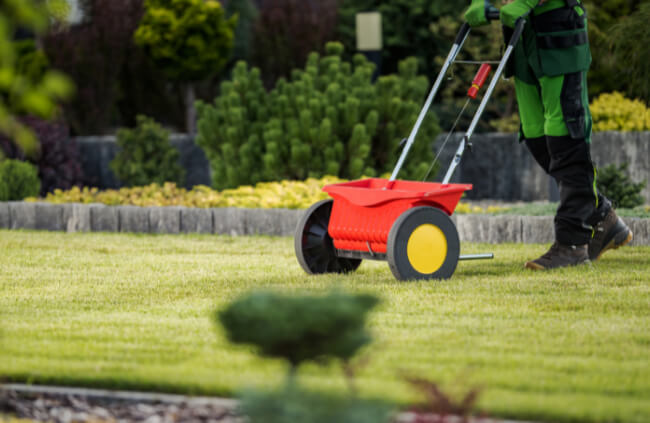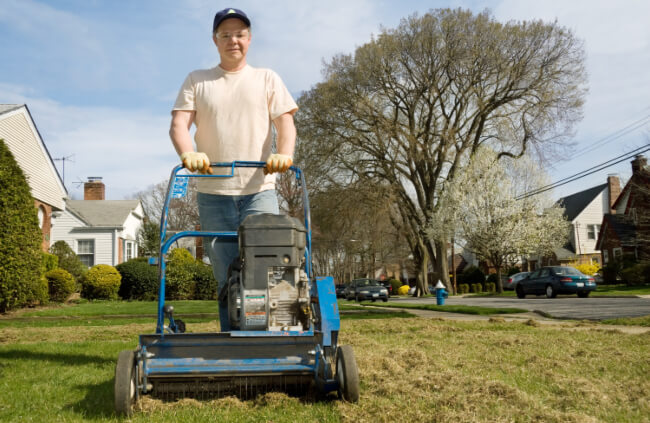As a gardener, most have knowledge on overseeding lawn but do you know how to overseed a lawn without aerating? When it comes to overseeding, homeowners undoubtedly think about aeration as an indispensable process. However, this isn’t always the case.
It is entirely possible to improve your lawn appearance and overseed without aerating. Here, you will learn how to do that.
More...
What is Overseeding?

The first thing you need to do is to understand the purpose of overseeding. To put it simply, overseeding refers to planting grass seed without removing either the turf or the soil.
Firstly, If you have bald or thin patches of grass in your lawn, overseeding is a surefire way to enhance the turfy density.
Secondly, better heat, drought, and traffic tolerant grasses can be planted in your lawn. It’s common when old lawns have grasses that demand so much water and fertiliser while easily succumbing to disease and pests. Thus, overseeding tolerant grass is a better option.
Thirdly, of course, overseeding will also give more colour to your lawn due to the new grass growth. It’s true that you would have to spend more time overseeding your lawn, but the long-term benefits make it worth the investment.
For one, you won’t have to use as much fertiliser, water, and herbicides as before.
Here is a video about overseeding a lawn:
How to Overseed a Lawn without Aerating
1. Choose the Grass Variety
Now that you know what overseeding is, you must determine the grass seed you want to plant in the existing turf. To help you make a decision, you should consider the climate and location.
Cool-season grass varieties include the fine fescues, the perennial ryegrass, and the Kentucky bluegrass. While warm-season grasses include Bahiagrass, centipede grass, and Bermuda grass.
2. Know When to Overseed
Knowing when to overseed is an important step in how to overseed a lawn without aerating. You should overseed during fall. This season is ideal due to the suitable weather. The air has begun to cool but the soil is still relatively warm.
More sunlight reaches the ground and the trees start to shed their leaves. Also, weed growth isn’t explosive during this fall season. Thus, there won’t be much competition for the new grass seeds.
As for plant diseases, they are unlikely to be active enough to damage the grass seedlings during this period. If you cannot overseed in the fall season, you could opt to do it in spring.
Warm-season grass varieties are more likely to germinate and grow at their optimal rate if the soil temperatures are consistently warm.
3. Prepare the Soil
Next, you need to prepare a good soil bed for the grass seedlings. First, get a lawn mower and mow the lawn to make it as near to the ground as possible. Specifically, the grass should be within one to 1.5 inches of the soil surface. This helps provide more sunlight to the seedlings.
In addition, you should get a metal rake to effectively get rid of any grass clippings and debris. You can skip using a lawn aerator, but we recommend using a dethatcher to remove any thick layers of thatch.

4. Spread the Seeds
If you will only be overseeding a small area on your lawn, you can opt to spread the seeds by hand. Still, we recommend that you first mix the grass seeds with sands to help them become evenly spread on your lawn.
If you have a sizable area to overseed, however, you should use either a broadcast spreader or a drop spreader. The amount of seeds you will spread is entirely up to you and how thick you want your lawn to be.
5. Apply Fertiliser
After uniformly spreading the seeds, you should get a 10-10-10 starter fertiliser. You should know the right amount to apply. For every 1,000 square feet of lawn, you should only use around two pounds of it.
To help spread the fertiliser evenly, you can use a metal rake. In fact, raking will even help the new seeds to have better contact with the soil.
6. Irrigate Properly
You cannot water the seeds the same way you irrigate the other parts of your lawn. The best option is to lightly water them at least two times every day for three weeks.
At least a quarter inch of the soil should stay moist, which provides the soil sufficient moisture without displacing the seeds. Be patient, wait for them to grow and establish roots in the soil.
After two to three weeks, the seedlings should begin to emerge from the soil. The exact period is affected not only by the soil temperature but also by how much and how many times you water the seedlings.
Eventually, the new grasses will be high enough for mowing and being irrigated regularly like the other grasses on your lawn. Just keep the mower blades well-sharpened to prevent the seedlings from accidentally being pulled off the ground.
Wrapping Up Guide to Overseeding a Lawn
Overall, overseeding without aeration is possible. You just have to pick the right grass varieties and know when to overseed. Likewise, it’s important to prepare the soil, apply enough starter fertiliser, and provide the right amount of water.
We hope that you learned a lot from our quick guide on how to overseed a lawn without aerating. If you have any queries, feel free to give us a comment.
Published on July 17, 2023 by Gary Clarke
Last Updated on October 25, 2023




